Before jumping back into my chronological X-Men read-through at the first few issues of the X-23 ongoing series, I wanted to read more about Laura Kinney's activities after the events of New X-Men. Following the Messiah CompleX crossover, she joined the new X-Force team also featuring Wolverine, Archangel, Warpath, and occasionally Wolfsbane, Elixir, Domino, and Vanisher.
Follow @C_Andrew_H
At the same time, I decided the read the post-Messiah CompleX Cable ongoing series. Cable and X-Force both cross over at the Messiah War event midway through both series, so I thought reading both simultaneously would be a good idea.
For this post, I read the following comics:
I read all of these on Comixology. I had first read the Messiah War crossover a couple of years ago, but at the time lacked the context of either the X-Force or Cable series. I bought and read X-Force for the first time in 2017. I bought Cable during a recent Comixology sale, coinciding with the release of the first issue of Cable's new ongoing series (except the last two issues, which I own in a Deadpool Classic digital collection). I've previously read Second Coming several times. I chose to skip the X-Force annual, the X-Force: Sex and Violence miniseries, and irrelevant tie-ins to Necrosha (issues of X-Men: Legacy and New Mutants) and Second Coming (X-Factor issues, the Spellbound miniseries, and the Blind Science one-shot, though I have read these before).
In the midst of trying to stop Bastion's allies from using mutants to kill humans (stoking public fear), X-Force uses special time travel bracelets to catch up with Cable. They learn that Cable's damaged time machine technology only lets him jump forward, and that Bishop has systematically destroyed much of the Earth in an effort to contain Cable in North America. Cable and X-Force manage to stop Bishop and Cable's mad clone Stryfe from killing Hope.
Eli Bard, meanwhile, has used the techno-organic virus to reanimate other dead people, including an Apache tribe and several mutants, including Thunderbird's older brother and the New Mutant Cypher. He gifts the virus to the love of his life, the villainess Selene, who uses it to resurrect the entire population of Genosha. She wishes to sacrifice these resurrected lives in a ritual to turn herself into a goddess, but X-Force prevails in stopping Bard, Selene, and others under their influence.
When Hope and Cable finally return to the present (having stranded Bishop in the time sttream after 16 years of running), the remaining villains bring their plan to fruition. They kill several powerful X-Men, including Nightcrawler, and trap almost the entire mutant population behind an energy shield in San Francisco. Sentinels from Bastion's future attack enclosed San Fran, but an X-Force team containing Cable and Cypher manage to travel to Bastion's future and shut down his operation, at the expense of Cable's life.
The villains in these series among the worst of the worst. When Bastion's "Human Council" is introduced in X-Force #3, each member is named and given credit for an exact number of mutants they killed. Matthew Risman is an assassin who murdered many mutant and depowered mutant children in New X-Men. Eli Bard is a vampire-like creature who claimed to have killed more Native Americans than smallpox. These people are mutantkind's worst enemies, and they are working to wipe out all mutants once and for all.
After Cable concludes and X-Force launches into the Second Coming crossover, years of planning (mostly featured in X-Force) finally come to fruition. Though some members of the Human Council are killed or otherwise apprehended, Bastion's team manages to secure a victory, if not for Cable's ultimate sacrifice: saving the lives of Wolverine, X-23, Domino, and Cypher.
We get a lot of good material here about Laura Kinney/X-23. Wolverine is deeply opposed to including her on X-Force, despite Cyclops's orders. As a former weapon, she takes very well to being ordered to kill, which worries Wolverine deeply (that her training with the Xavier Institute is wearing off). A side-plot involving a SHIELD agent hunting X-23 is compelling, especially as it concludes with that agent and X-23 being captured by X-23's former handler Kimura and others from the Facility that made her. Laura goes willingly into Bastion's future with Cable and Wolverine, almost sacrificing herself for the greater good of mutantkind. Only Cable's noble death saves her. When X-Force disbands, Wolverine insists that X-23 live for herself and not take any more kill orders (though he secretly reforms X-Force without her knowledge).
Overall, X-Force and Cable were excellent stories about ultra-violence on the margins of typical superhero X-Men books.
Next: I'm finally able to return to my chronological read-through of modern X-Men books, starting with the first few issues of X-23 by Marjorie Liu!
- X-Force 1-28 (by Craig Kyle and Chris Yost, 2008-2010)
- Cable 1-26 + King-Size Spectacular (by Duane Swierczynski, 2008-2010; final issue was retitled Deadpool and Cable)
- X-Men: The Times and Life of Lucas Bishop 1-3 (by Duane Swierczynski, 2009)
- X-Men: Hope one-shot (by Duane Swierczynski, 2010)
- X-Force/Cable: Messiah War one-shot (by Craig Kyle and Chris Yost, 2009)
- X-Necrosha: The Gathering and X-Necrosha one-shots (by Craig Kyle and Chris Yost, 2009)
- The X-Men: Second Coming crossover event, which in addition to X-Force 26-28 (above) includes the following issues from 2010:
- X-Men: Second Coming 1-2 (by Craig Kyle and Chris Yost, 2010)
- Uncanny X-Men 523-525 (by Matt Fraction, 1963)
- New Mutants 12-14 (by Zeb Wells, 2009)
- X-Men: Legacy 235-237 (by Mike Carey, 1991)
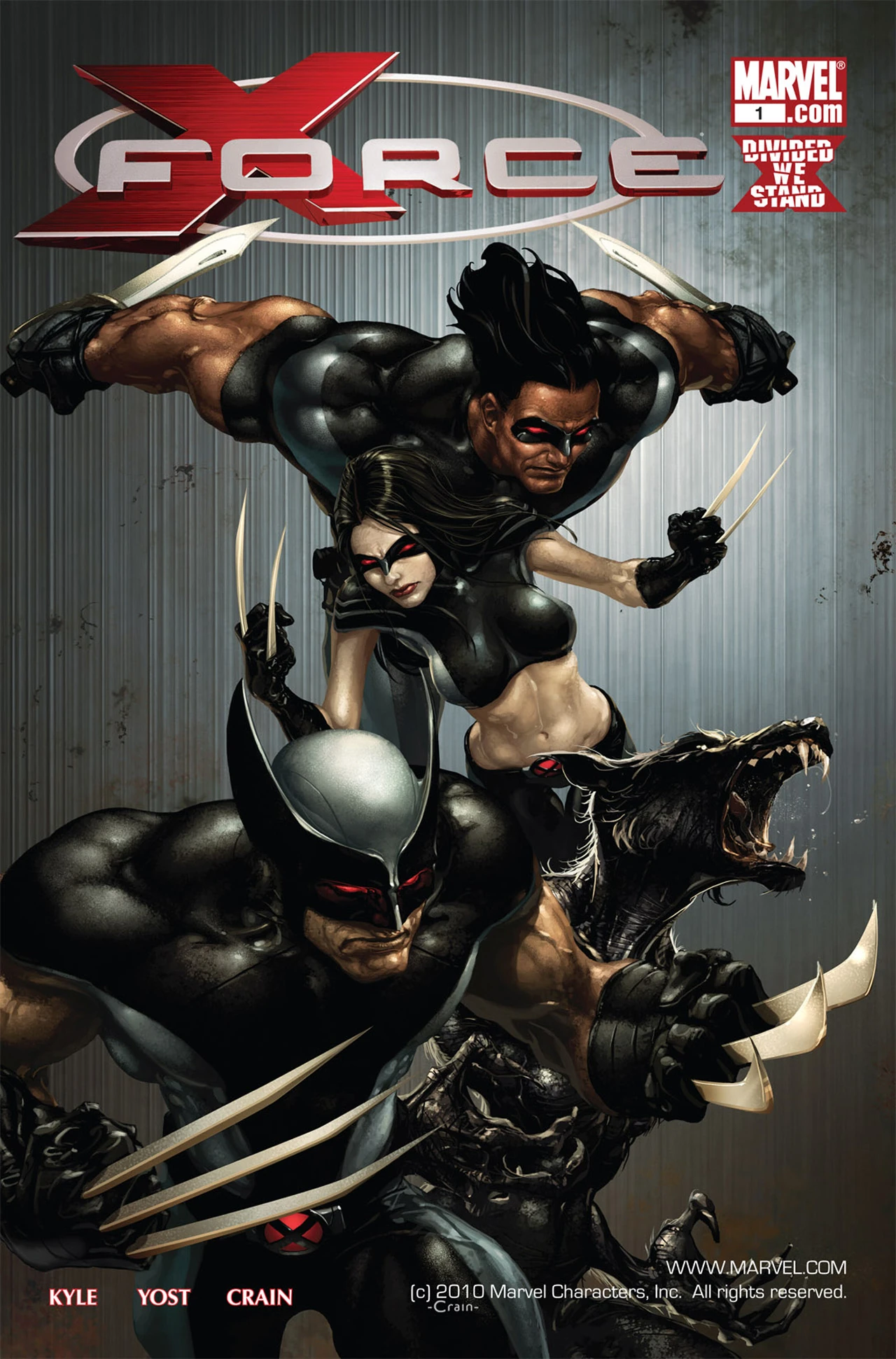 |
| Cover of X-Force #1. Image from Marvel Wiki. |
I read all of these on Comixology. I had first read the Messiah War crossover a couple of years ago, but at the time lacked the context of either the X-Force or Cable series. I bought and read X-Force for the first time in 2017. I bought Cable during a recent Comixology sale, coinciding with the release of the first issue of Cable's new ongoing series (except the last two issues, which I own in a Deadpool Classic digital collection). I've previously read Second Coming several times. I chose to skip the X-Force annual, the X-Force: Sex and Violence miniseries, and irrelevant tie-ins to Necrosha (issues of X-Men: Legacy and New Mutants) and Second Coming (X-Factor issues, the Spellbound miniseries, and the Blind Science one-shot, though I have read these before).
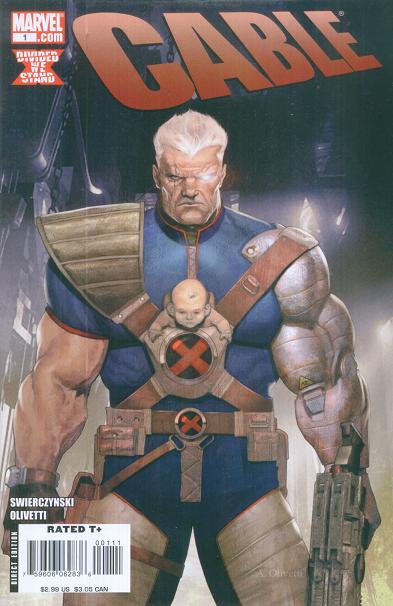 |
| Cover of Cable #1. Image from Marvel Wiki |
Story:
In the last big crossover, Messiah CompleX, Cable has absconded into the future with the first mutant baby born since mutants were nearly wiped out, a baby he eventually names Hope. Former X-Man Bishop is hunting them through time, as he is convinced killing the baby will ensure the bad future he came from (as depicted in the miniseries The Times and Life of Lucas Bishop) never comes to be. Meanwhile, the enemies of the X-Men, including religious zealot/assassin Matthew Risman and the newly-repaired Bastion (a robotic Sentinel from the future), are laying the groundwork to destroy all mutants. Risman, Bastion, and the vampire-like Eli Bard use the techno-organic virus to resurrect the X-Men's worst human enemies.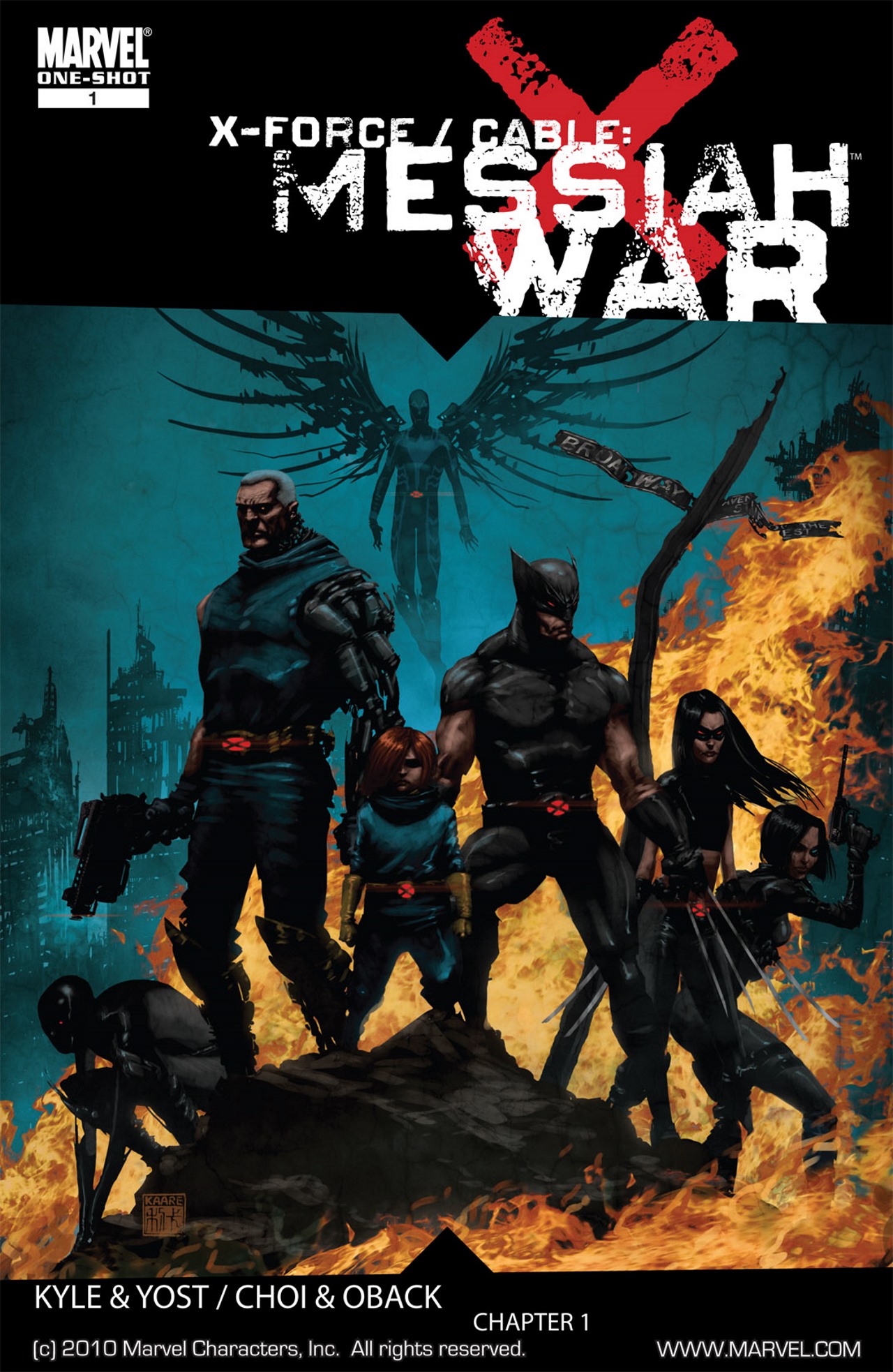 |
| Cover of the X-Force/Cable: Messiah War one-shot. Image from Marvel Wiki. |
In the midst of trying to stop Bastion's allies from using mutants to kill humans (stoking public fear), X-Force uses special time travel bracelets to catch up with Cable. They learn that Cable's damaged time machine technology only lets him jump forward, and that Bishop has systematically destroyed much of the Earth in an effort to contain Cable in North America. Cable and X-Force manage to stop Bishop and Cable's mad clone Stryfe from killing Hope.
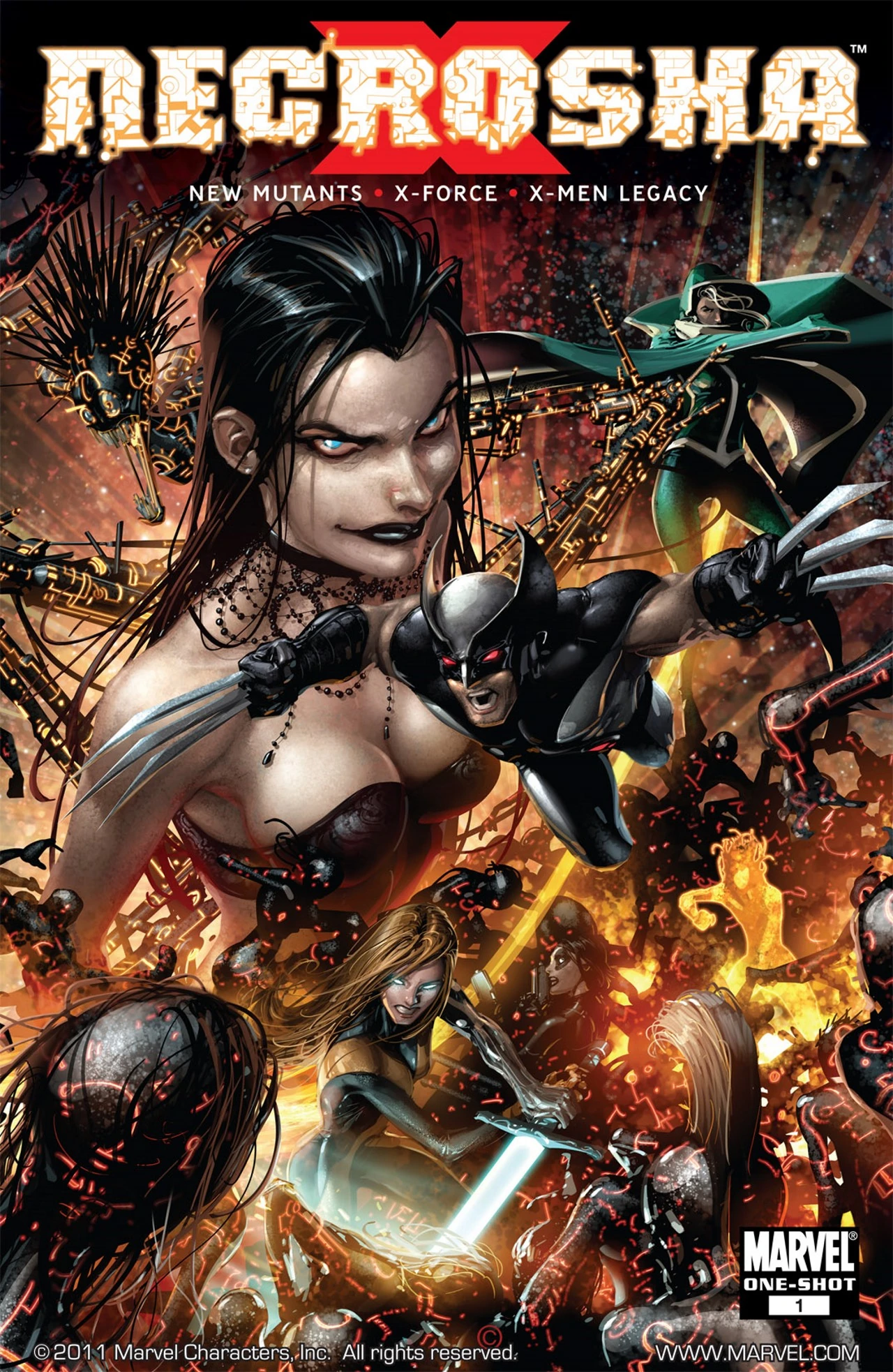 |
| Cover of the X-Necrosha one-shot. Image from Marvel Wiki. |
Eli Bard, meanwhile, has used the techno-organic virus to reanimate other dead people, including an Apache tribe and several mutants, including Thunderbird's older brother and the New Mutant Cypher. He gifts the virus to the love of his life, the villainess Selene, who uses it to resurrect the entire population of Genosha. She wishes to sacrifice these resurrected lives in a ritual to turn herself into a goddess, but X-Force prevails in stopping Bard, Selene, and others under their influence.
When Hope and Cable finally return to the present (having stranded Bishop in the time sttream after 16 years of running), the remaining villains bring their plan to fruition. They kill several powerful X-Men, including Nightcrawler, and trap almost the entire mutant population behind an energy shield in San Francisco. Sentinels from Bastion's future attack enclosed San Fran, but an X-Force team containing Cable and Cypher manage to travel to Bastion's future and shut down his operation, at the expense of Cable's life.
Thoughts:
I'm a big fan of darker narratives, and the stories of Wolverine's Cyclops-sanctioned secret hit squad and Cable's story of survival in the post-apocalypse certainly qualify. In X-Force, Wolverine's team holds mutantkind's enemies at the gate using any means necessary. Other X-Men teams in Uncanny X-Men, New Mutants, and X-Men: Legacy can do their superheroic work free of their most vicious enemies and unburdened with the knowledge that some X-Men are committing murder. In Cable, Bishop is convinced that murdering a child will prevent the dark future from whence he came. Furthermore, he is convinced that the future into which Cable and Hope flee isn't "real" and has no compunctions about genocide, killing the overwhelming majority of the Earth's population. These dark stories are excellent in contrast to the lighter superhero stories or teen dramas found in many other X-titles.The villains in these series among the worst of the worst. When Bastion's "Human Council" is introduced in X-Force #3, each member is named and given credit for an exact number of mutants they killed. Matthew Risman is an assassin who murdered many mutant and depowered mutant children in New X-Men. Eli Bard is a vampire-like creature who claimed to have killed more Native Americans than smallpox. These people are mutantkind's worst enemies, and they are working to wipe out all mutants once and for all.
 |
| The Human Council. Screenshot taken from X-Force #3 on Comixology. |
After Cable concludes and X-Force launches into the Second Coming crossover, years of planning (mostly featured in X-Force) finally come to fruition. Though some members of the Human Council are killed or otherwise apprehended, Bastion's team manages to secure a victory, if not for Cable's ultimate sacrifice: saving the lives of Wolverine, X-23, Domino, and Cypher.
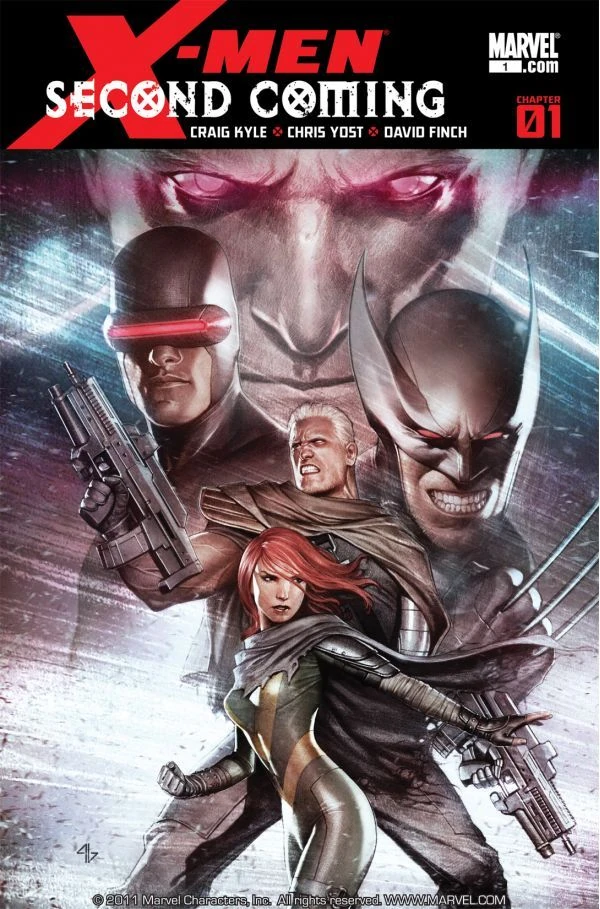 |
| Cover of X-Men: Second Coming #1. Image from Marvel Wiki. |
We get a lot of good material here about Laura Kinney/X-23. Wolverine is deeply opposed to including her on X-Force, despite Cyclops's orders. As a former weapon, she takes very well to being ordered to kill, which worries Wolverine deeply (that her training with the Xavier Institute is wearing off). A side-plot involving a SHIELD agent hunting X-23 is compelling, especially as it concludes with that agent and X-23 being captured by X-23's former handler Kimura and others from the Facility that made her. Laura goes willingly into Bastion's future with Cable and Wolverine, almost sacrificing herself for the greater good of mutantkind. Only Cable's noble death saves her. When X-Force disbands, Wolverine insists that X-23 live for herself and not take any more kill orders (though he secretly reforms X-Force without her knowledge).
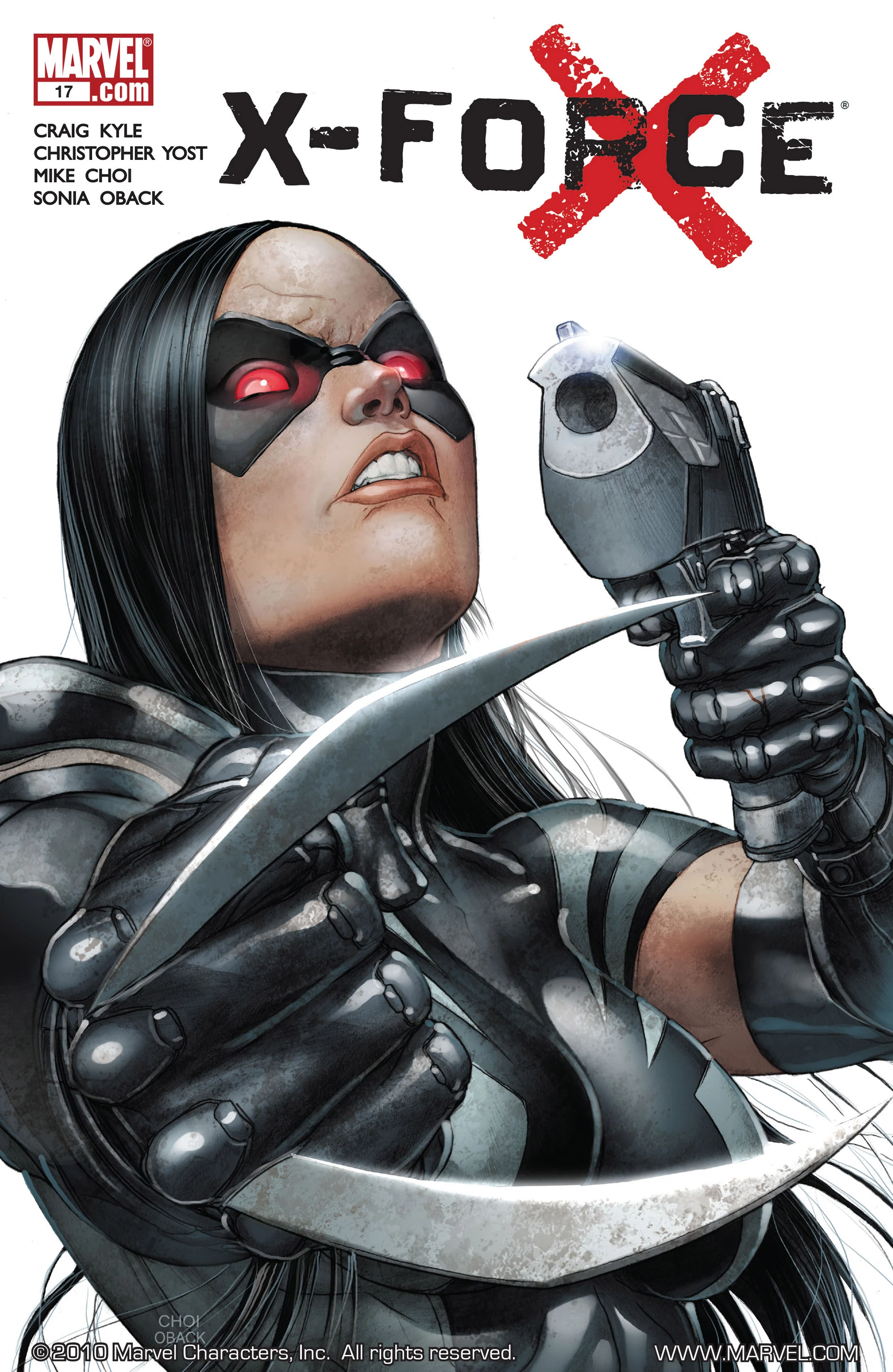 |
| X-23 on the cover of X-Force #17. Image from Marvel Wiki. |
Overall, X-Force and Cable were excellent stories about ultra-violence on the margins of typical superhero X-Men books.
Next: I'm finally able to return to my chronological read-through of modern X-Men books, starting with the first few issues of X-23 by Marjorie Liu!
Comments
Post a Comment